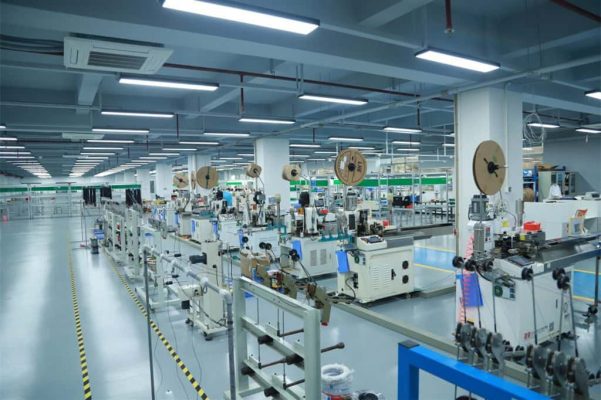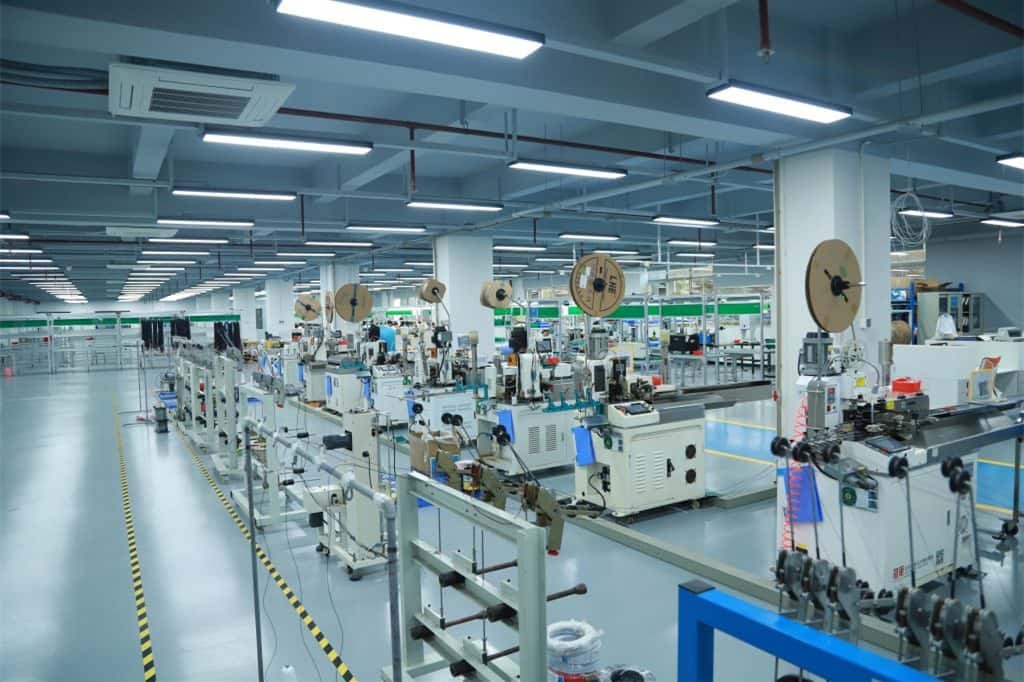As the world places increasing emphasis on environmental issues, industries must adapt to greener, more sustainable practices, including the wire harness manufacturing sector. Wire harness components are critical in industries such as automotive, electronics, and industrial machinery. However, producing wire harnesses involves considerable use of materials like plastics and metals, which, if not managed responsibly, can harm the environment. By adopting sustainable practices, wire harness manufacturers can reduce their environmental footprint while still meeting the growing demand for high-quality products.
Konnra will discuss how sustainability is being incorporated into factory harness production and the key practices manufacturers are using to meet this goal. We’ll also discuss how choosing the right materials, optimizing energy efficiency, and minimizing waste can help the industry meet its sustainability objectives while remaining competitive.

The Importance of Sustainability in Wire Harness Manufacturing
Wire harnesses use significant amounts of copper, plastic, and other materials. The extraction, processing, and disposal of these materials pose environmental challenges. For instance, copper mining is energy-intensive and creates significant waste, while the production of plastic insulation can contribute to pollution if not done sustainably. As a result, sustainable practices in wire harness production are becoming a vital aspect of industrial planning. The focus on sustainability isn’t just about adhering to environmental regulations—it’s about improving efficiency, reducing waste, and future-proofing the industry.
Manufacturers of factory harness products are now prioritizing eco-friendly practices to remain competitive and meet the demands of environmentally conscious customers. This shift toward sustainability can help businesses reduce costs in the long run, improve their brand image, and make their products more attractive to clients who prioritize green practices.
Key Areas of Sustainable Practices in Wire Harness Manufacturing
1. Eco-Friendly Material Selection
A key aspect of sustainable wire harness manufacturing is the choice of materials. Traditionally, wire harnesses use PVC (polyvinyl chloride) for insulation, which is durable but problematic for the environment due to its harmful byproducts when produced and disposed of. However, many industrial wire harness processing manufacturers are now moving toward halogen-free and recyclable materials, such as polyethylene or thermoplastic elastomers (TPE), which have lower environmental impact.
Using recyclable materials helps minimize waste, while biodegradable insulation materials ensure that wire harnesses do not contribute to landfill waste after their lifecycle ends. Furthermore, copper, while efficient for electrical conduction, is a non-renewable resource. Efforts are underway to either minimize the amount of copper used or replace it with alternatives that are more sustainable but offer similar conductivity.
By selecting these eco-friendly alternatives, manufacturers not only reduce the environmental impact of their products but also align their practices with stringent global standards for sustainability. Certifications such as RoHS (Restriction of Hazardous Substances) encourage the use of safer materials and contribute to greener production lines.
2. Energy Efficiency in Production
The production of wire harnesses involves several energy-intensive processes, including wire drawing, insulation extrusion, and component assembly. To ensure a more sustainable approach, many industrial wire harness processing manufacturers have started integrating energy-efficient technologies in their production lines. This includes using energy-saving equipment, implementing automation to optimize production efficiency, and adopting renewable energy sources like solar or wind power to offset traditional electricity use.
Additionally, manufacturers can reduce their overall energy consumption by deploying smart manufacturing technologies. For example, digital monitoring systems can track energy usage in real time, enabling manufacturers to identify inefficiencies and adjust operations accordingly. Implementing energy-efficient practices not only reduces the carbon footprint of production but also lowers operating costs, creating a win-win situation for both the business and the environment.
3. Waste Management and Recycling
Another critical aspect of sustainable wire harness manufacturing is effective waste management. During production, waste materials such as excess wire, scrap plastic, and metal are inevitable. However, rather than discarding these materials, manufacturers are now implementing recycling and reprocessing systems to minimize waste. This approach ensures that excess materials are either reused in production or repurposed into new products, reducing the need for virgin resources.
For example, scrap copper can be melted down and reused, while excess plastic insulation can be reprocessed and incorporated into new batches. This not only helps reduce waste sent to landfills but also cuts down on raw material costs for manufacturers.
Moreover, manufacturers are exploring new technologies like 3D printing to produce specific wire harness components with greater precision, thereby minimizing material waste. This process ensures that only the necessary amount of material is used, reducing excess and improving the overall sustainability of the manufacturing process.
4. Adopting a Circular Economy Approach
A circular economy focuses on maximizing resource use by keeping materials in circulation for as long as possible, thus minimizing waste. In the context of wire harness manufacturing, this approach can be implemented by designing products with recyclability in mind and creating systems for returning used products to manufacturers for refurbishment or recycling.
Some factory harness manufacturers are exploring business models that involve leasing wire harnesses to clients, who can return them after use. These returned components can then be dismantled, with their materials re-entering the production cycle. This approach not only minimizes waste but also reduces the demand for raw materials.
By embracing circular economy principles, wire harness manufacturers can extend the lifecycle of their products, reduce environmental impact, and create new business opportunities. This model aligns with global efforts to transition toward more sustainable economic systems, where waste is minimized, and resources are used more efficiently.
How We Incorporate Sustainability in Wire Harness Manufacturing
At our company, we are committed to making wire harness manufacturing more sustainable by adopting several key practices:
1. Eco-Friendly Materials:
We prioritize the use of halogen-free, recyclable, and biodegradable materials in our products. These materials reduce environmental impact while maintaining the performance and durability that our clients expect.
2. Energy-Efficient Production:
We have invested in energy-saving machinery and smart factory systems to optimize energy use. Additionally, we are incorporating renewable energy sources, such as solar power, to further reduce our carbon footprint.
3. Waste Management:
We have established comprehensive waste recycling programs. All scrap materials generated during production are collected and recycled, minimizing the amount of waste that ends up in landfills.
4. Sustainable Supply Chain:
We work closely with suppliers who share our commitment to sustainability. By sourcing materials from responsible partners, we ensure that our entire production process aligns with green practices.
By integrating these sustainability initiatives, we are not only improving the environmental impact of our products but also ensuring that our wire harness solutions meet the highest standards for both quality and eco-friendliness.
Conclusion
Sustainability in wire harness manufacturing is no longer an option—it is a necessity. By embracing eco-friendly materials, optimizing energy efficiency, managing waste, and adopting circular economy principles, manufacturers can create products that are not only high-quality but also environmentally responsible.
Our commitment to sustainability ensures that we deliver factory harness products that align with global environmental standards and customer expectations. Contact us today to learn more about how our sustainable wire harness solutions can benefit your business and contribute to a greener future.










